Abstract
Covariation within behavior repertoires of problem children were examined. Two boys, referred for psychological help, were observed both at school and at home for about 3 yr. A coded observation system permitted scoring of 19 child-behavior categories and six social-environment categories. After a two-month baseline, behavior categories were intercorrelated, demonstrating that each child showed a group of behaviors that covaried. These groupings were specific to the home and school settings. Contingency management procedures were then applied to each child's problem behaviors in one setting. Next, a reversal phase was instituted, followed by resumption of the initial contingency management phase. These three phases lasted seven months, until the end of the children's public school terms. Results showed that the baseline group of covarying behaviors continued to covary over the three experimental phases. The children then entered a remedial education setting for three summer months, and then returned to schools and were observed in follow-up for 2 yr. The baseline group of behaviors continued to covary during both phases. The behavior covariations could not be accounted for on the basis of temporal relations between the behaviors and social enviroment categories. Although no behavior covariations extended across either child's home and school settings, contingency management procedures produced across-setting effects.
Full text
PDF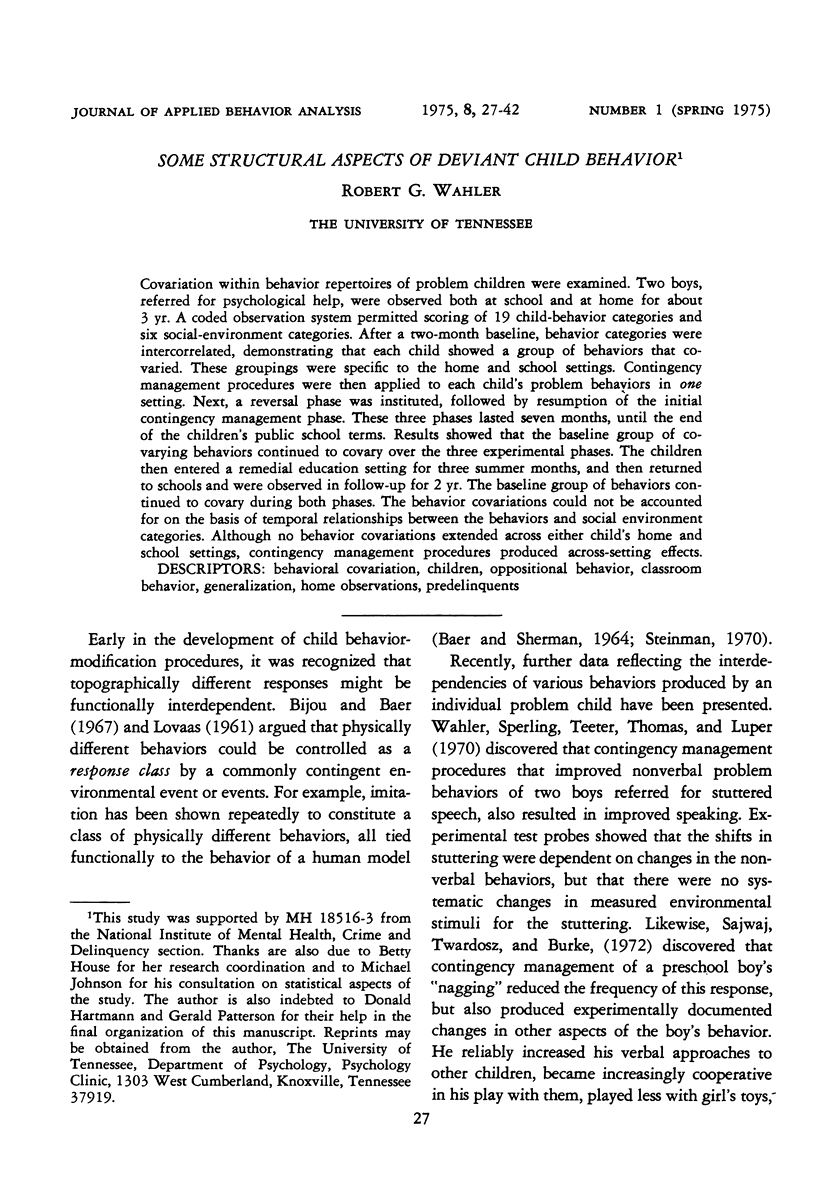
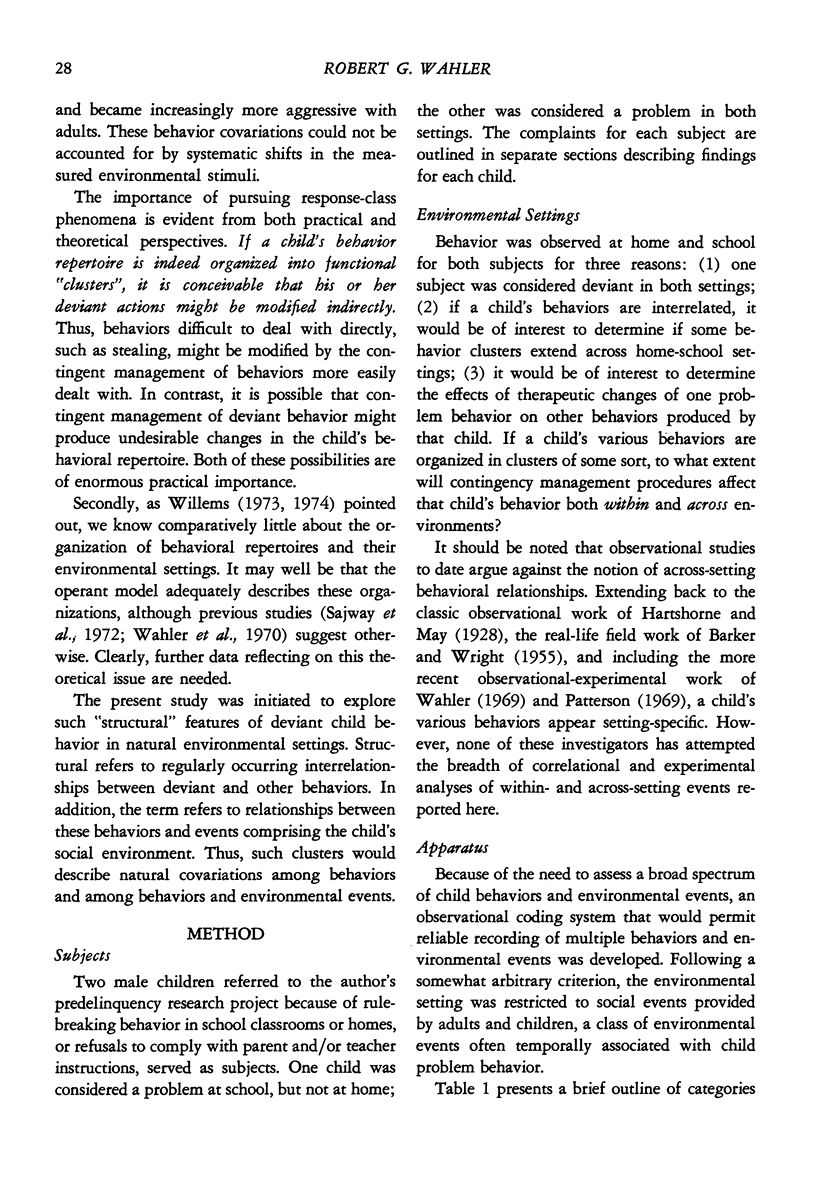
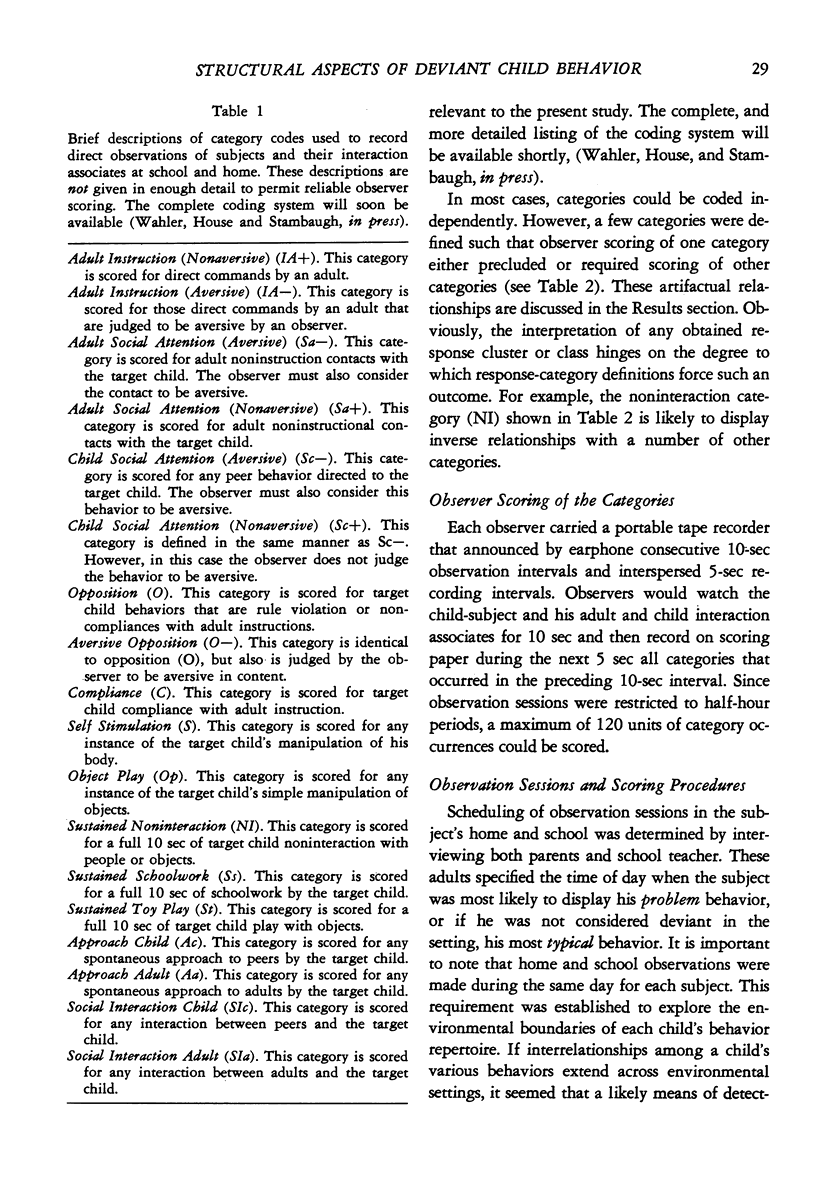
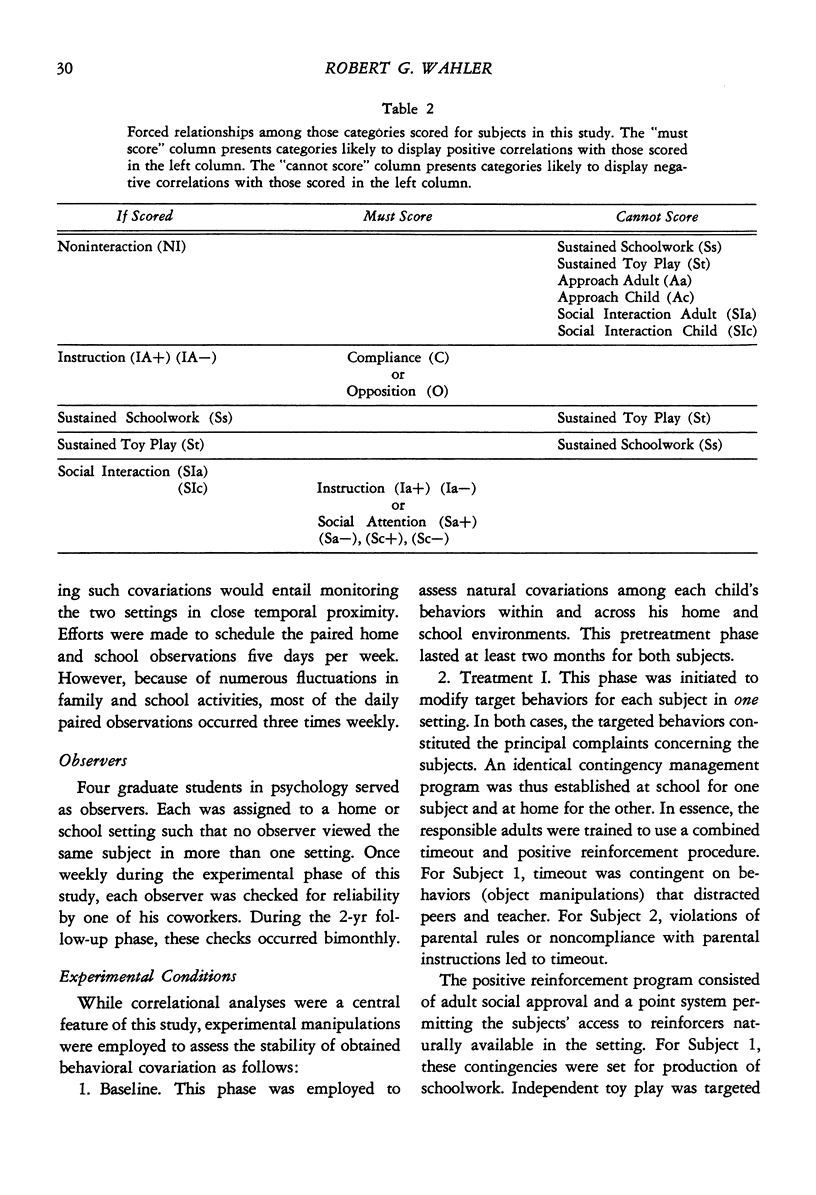
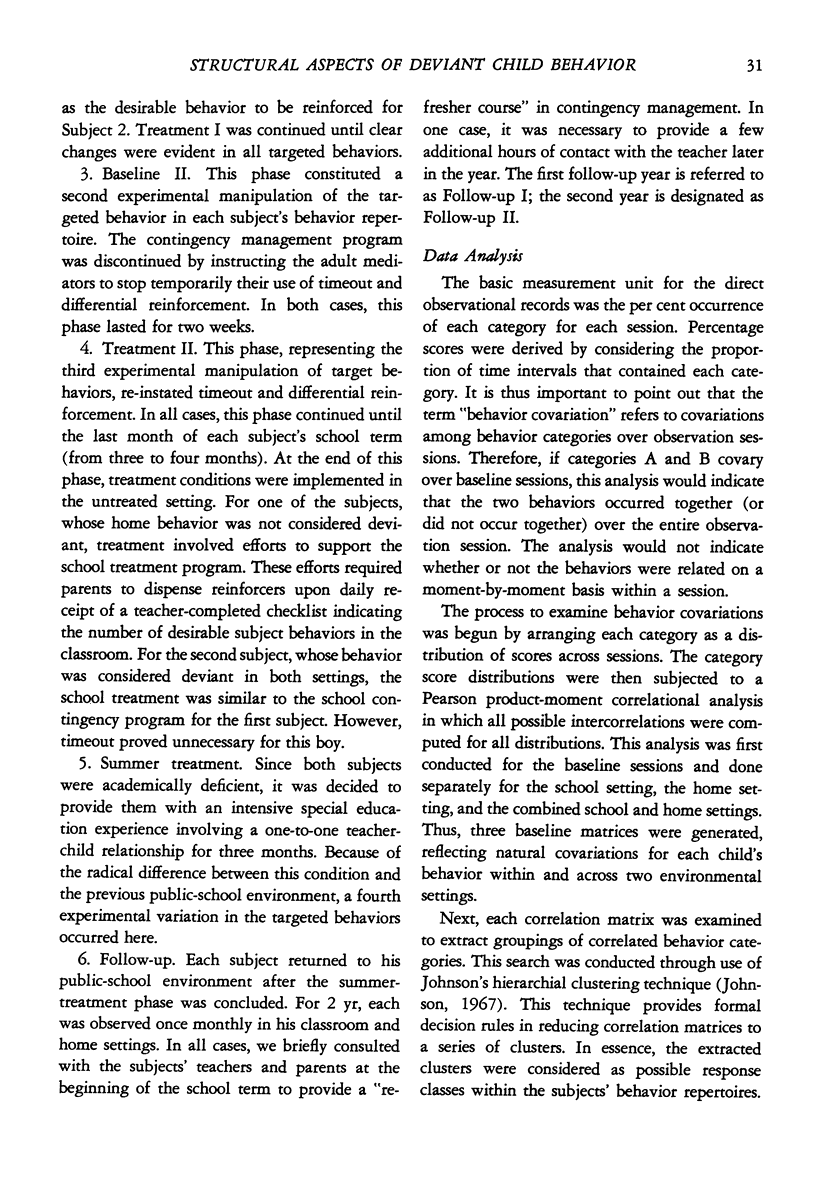
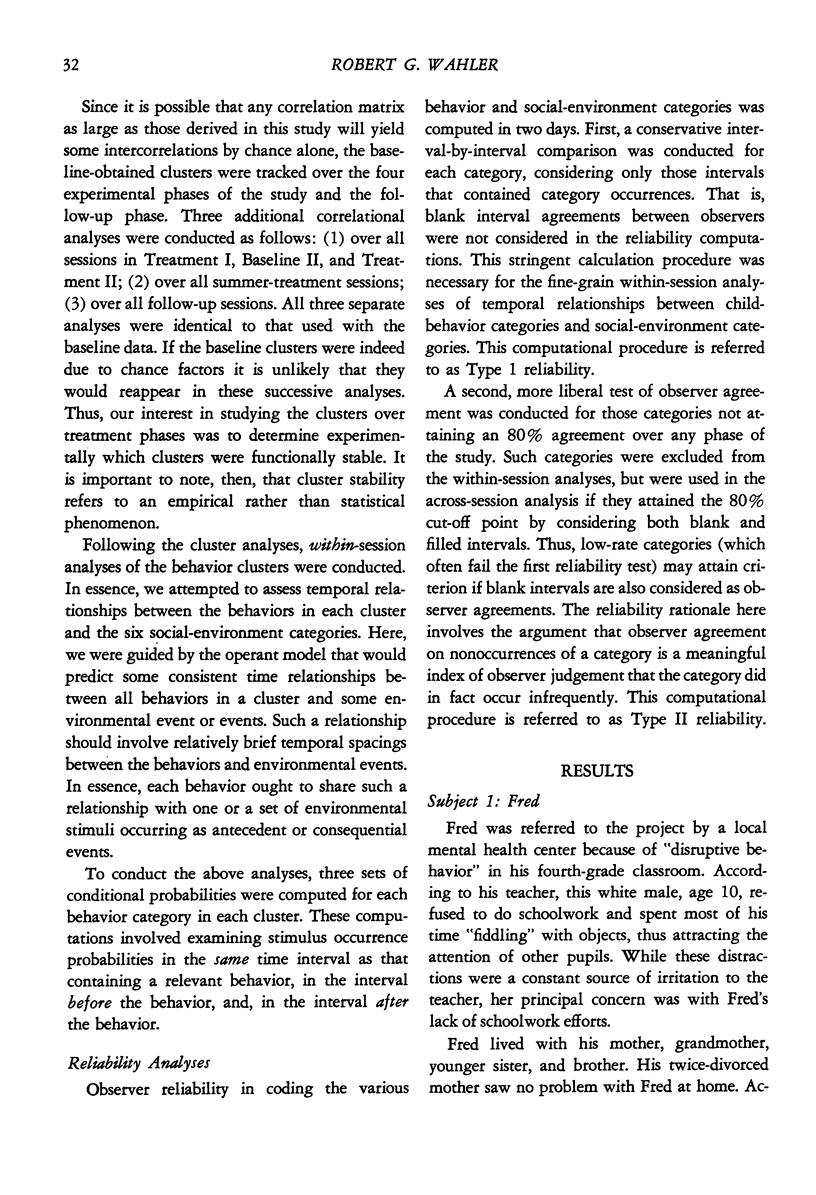
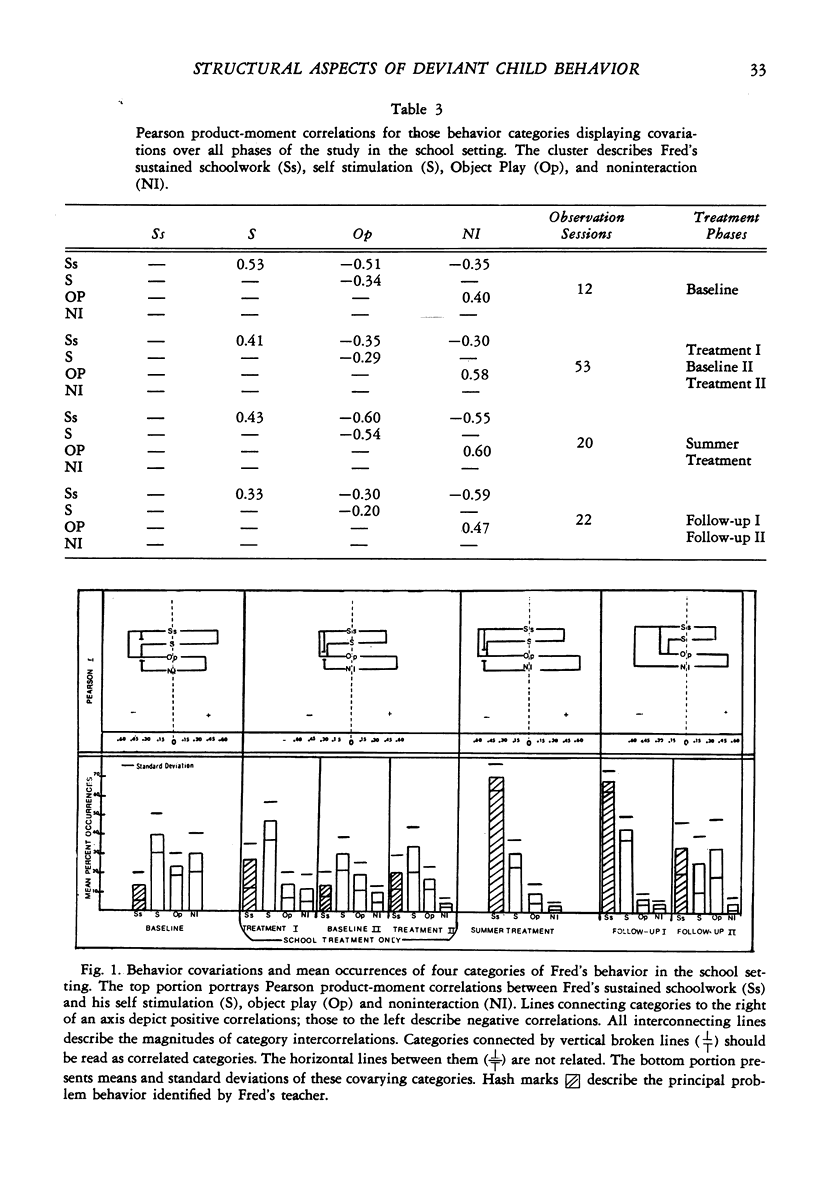
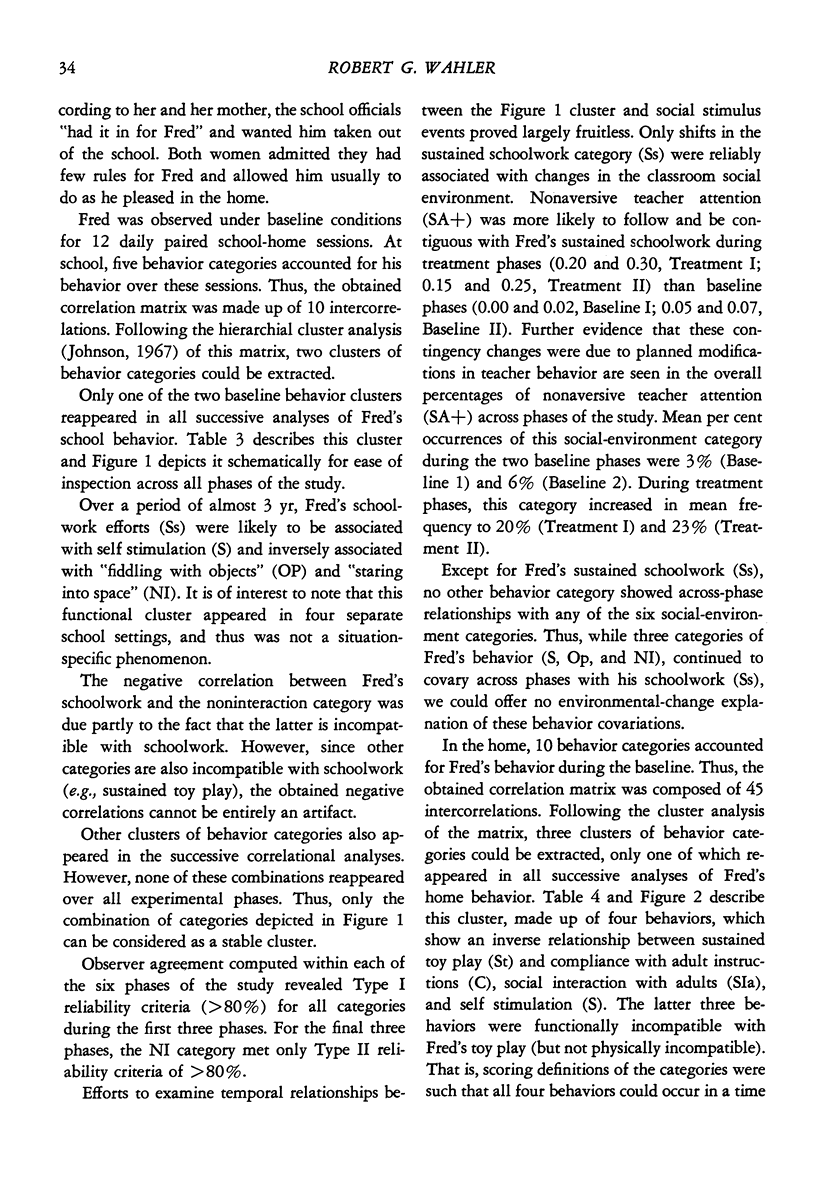
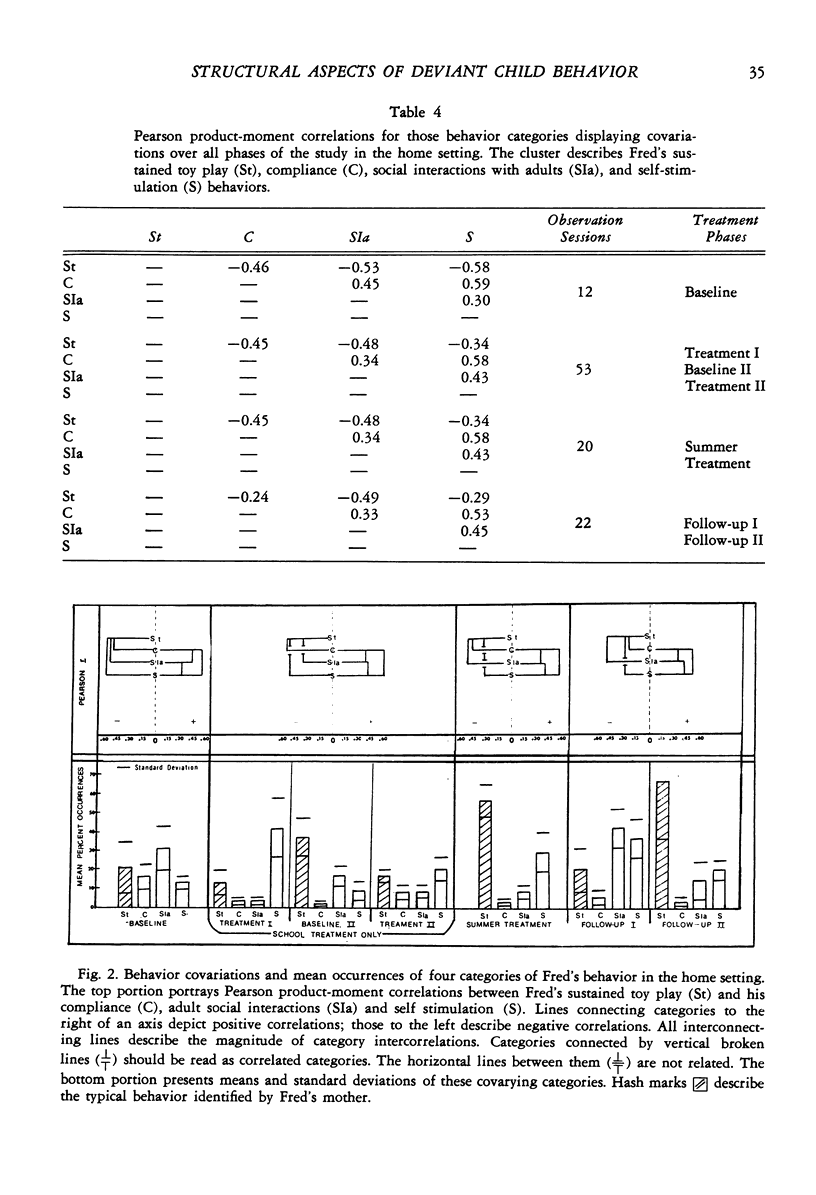
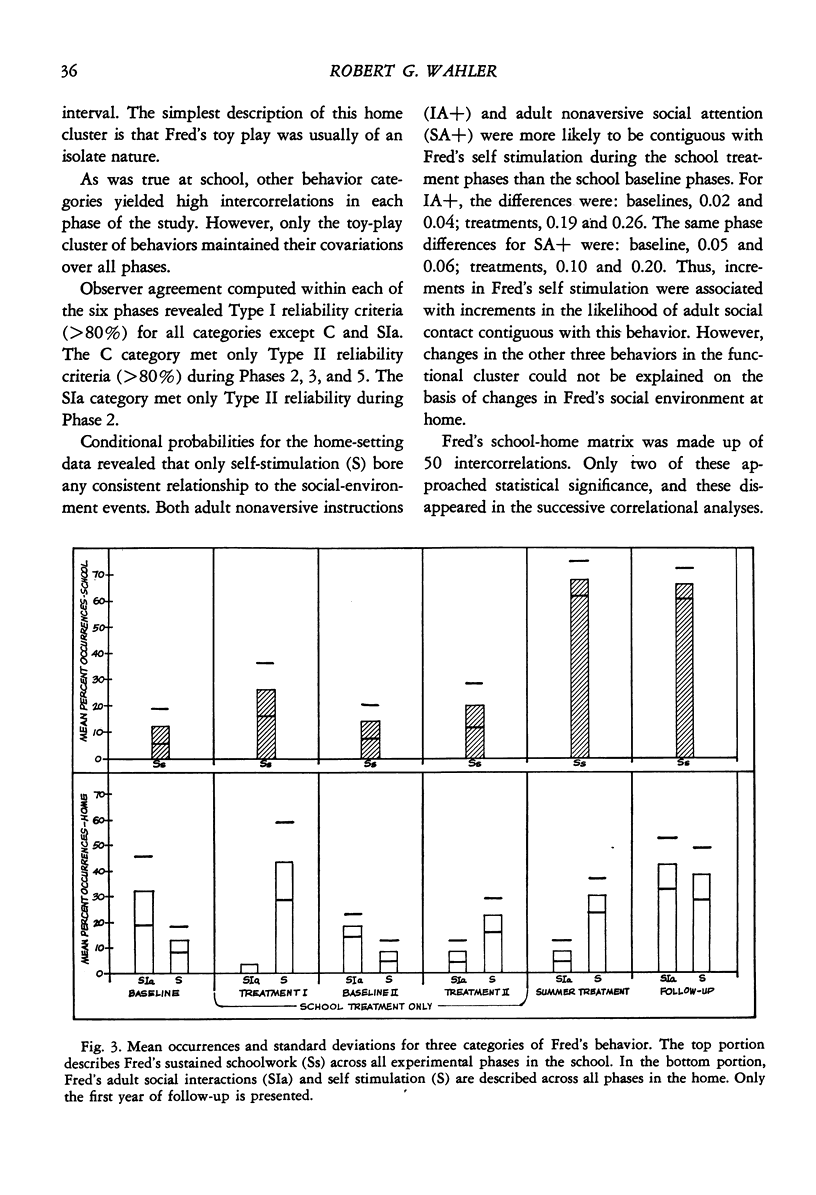
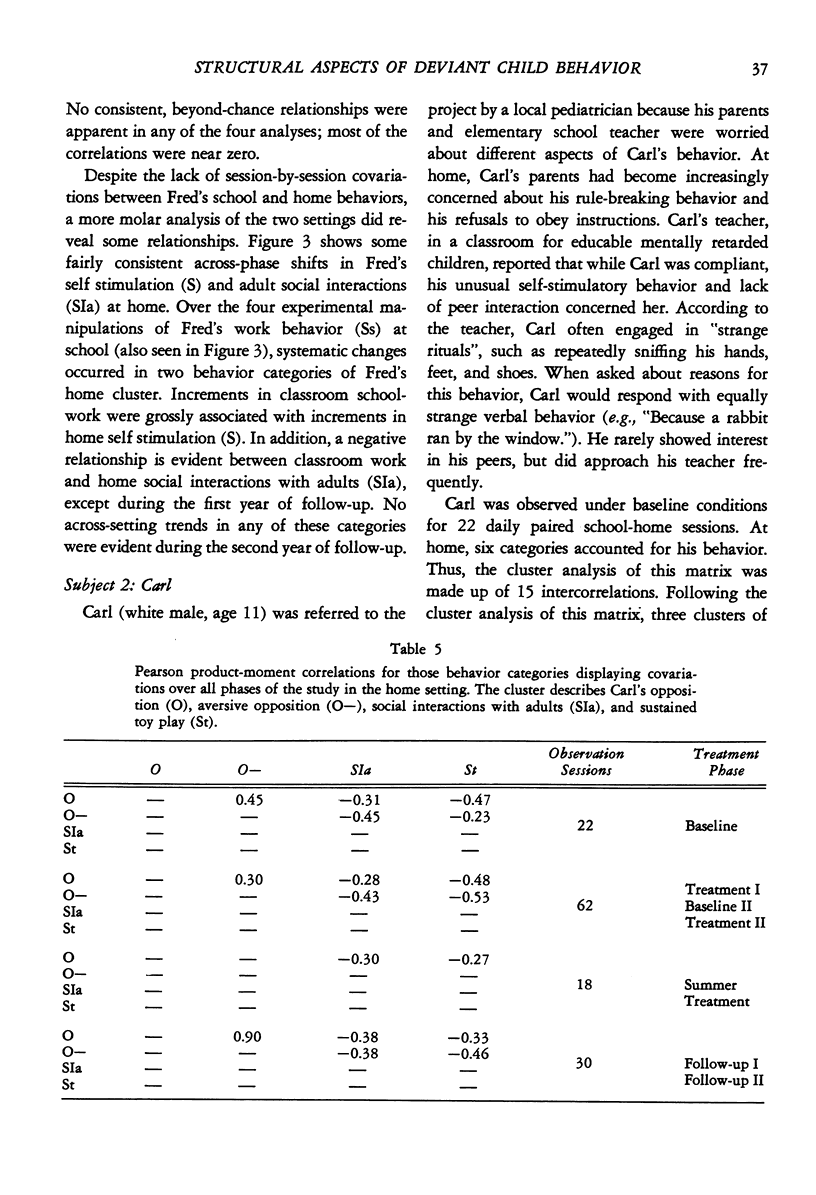
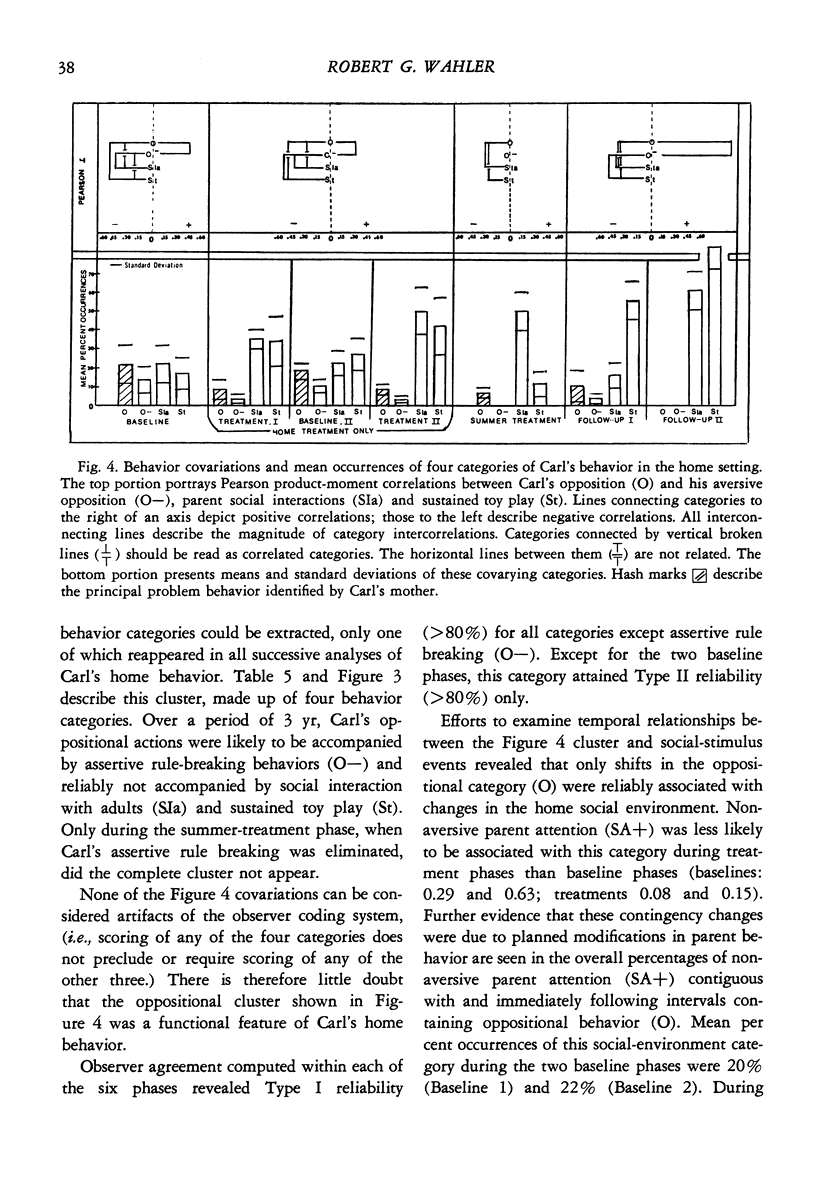
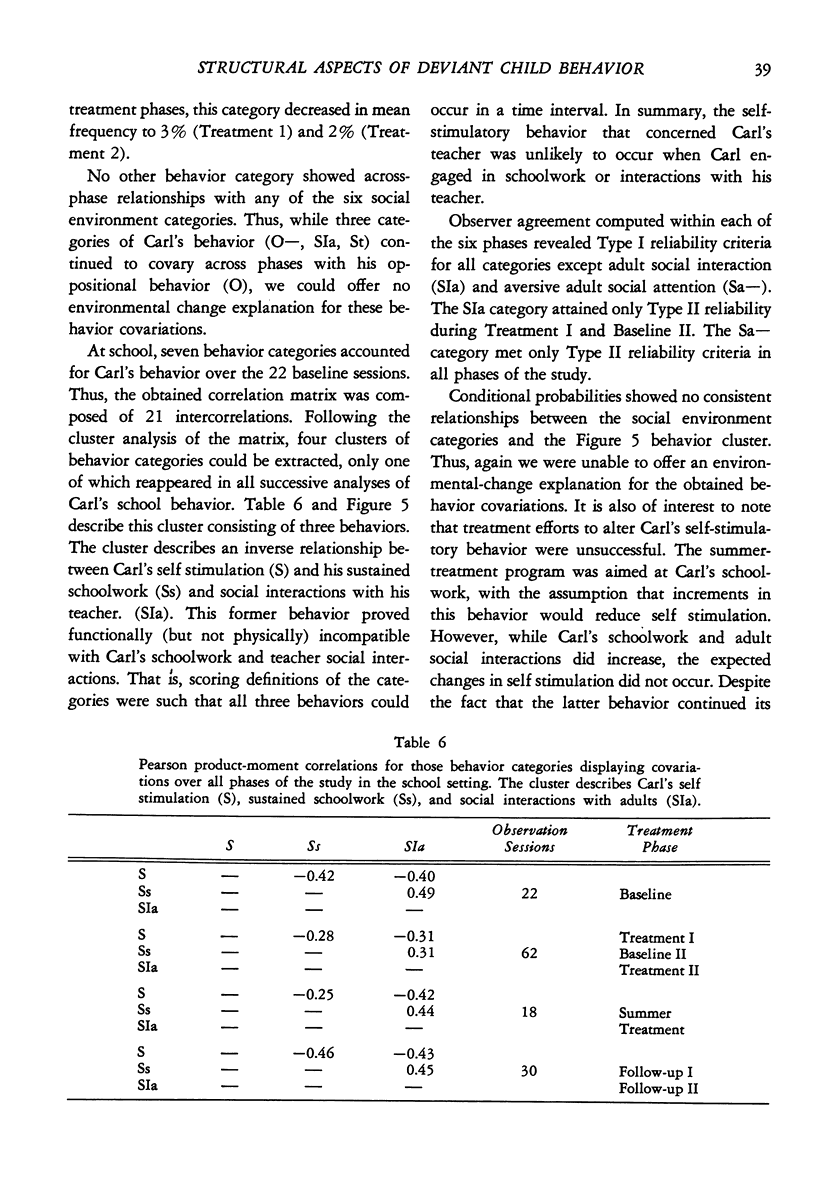
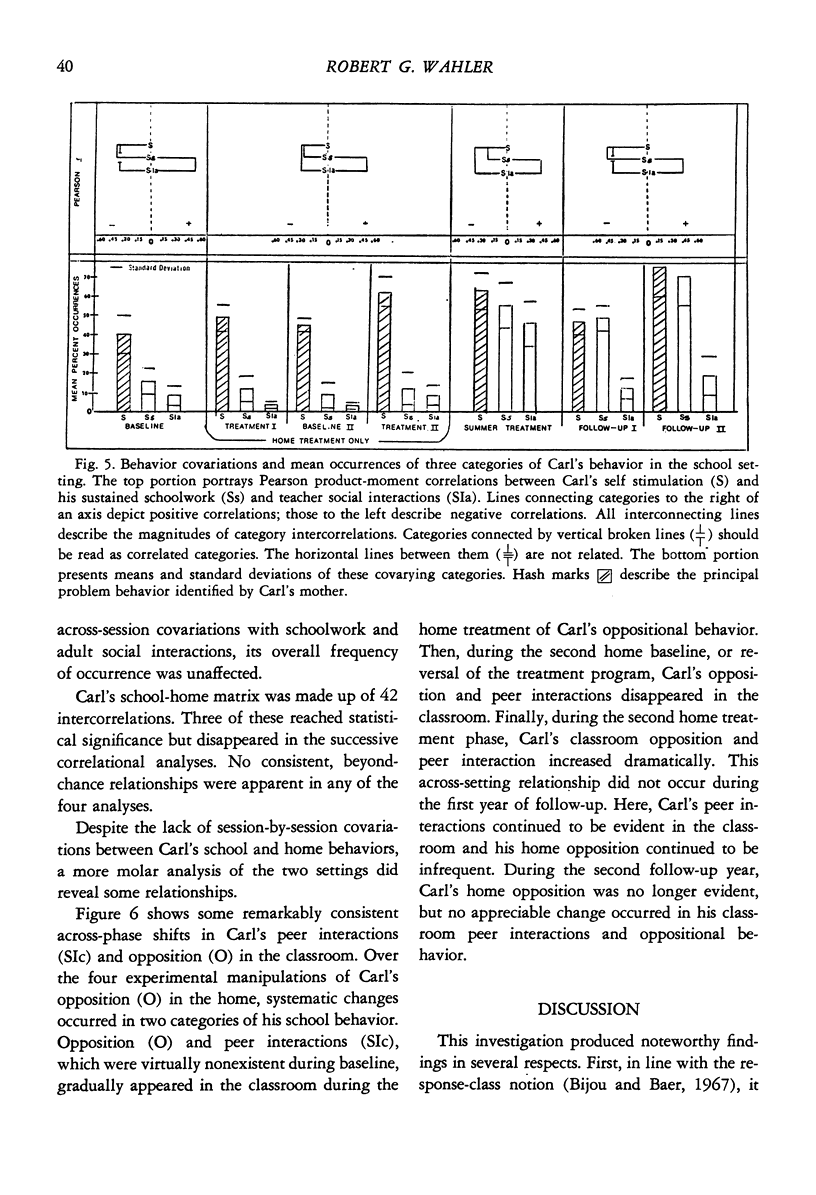
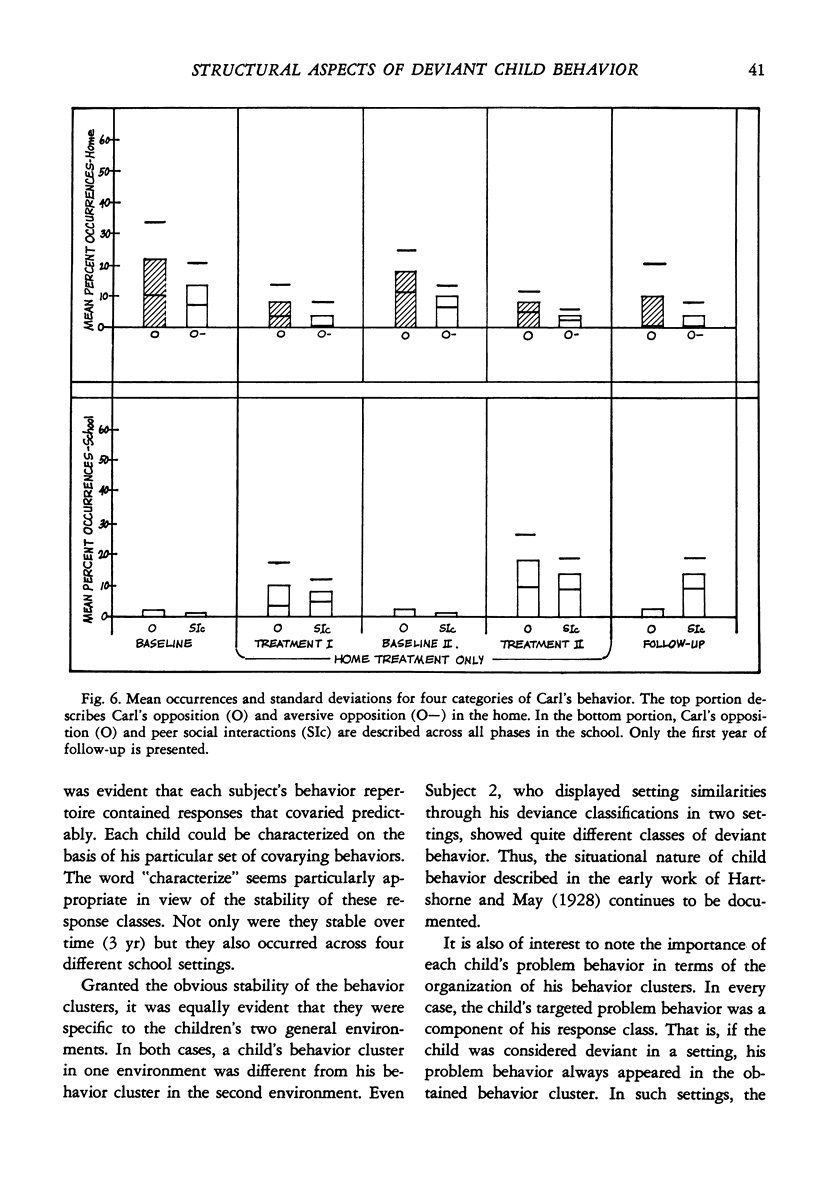
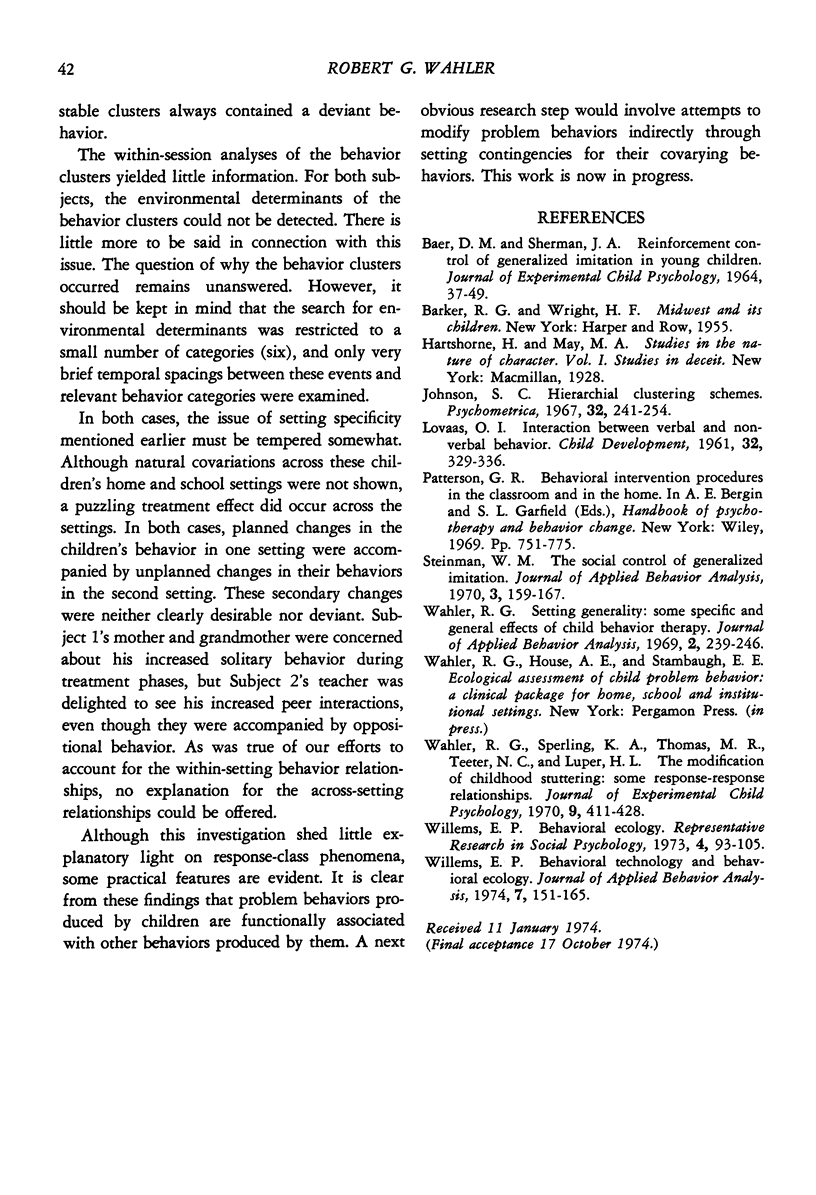
Selected References
These references are in PubMed. This may not be the complete list of references from this article.
- Johnson S. C. Hierarchical clustering schemes. Psychometrika. 1967 Sep;32(3):241–254. doi: 10.1007/BF02289588. [DOI] [PubMed] [Google Scholar]
- LOVAAS O. I. Interaction between verbal and nonverbal behavior. Child Dev. 1961 Jun;32:329–336. doi: 10.1111/j.1467-8624.1961.tb05031.x. [DOI] [PubMed] [Google Scholar]
- Steinman W. M. The social control of generalized imitation. J Appl Behav Anal. 1970 Fall;3(3):159–167. doi: 10.1901/jaba.1970.3-159. [DOI] [PMC free article] [PubMed] [Google Scholar]
- Wahler R. G. Setting generality: some specific and general effects of child behavior therapy. J Appl Behav Anal. 1969 Winter;2(4):239–246. doi: 10.1901/jaba.1969.2-239. [DOI] [PMC free article] [PubMed] [Google Scholar]
- Wahler R. G., Sperling K. A., Thomas M. R., Teeter N. C., Luper H. L. The modification of childhood stuttering: some response-response relationships. J Exp Child Psychol. 1970 Jun;9(3):411–428. doi: 10.1016/0022-0965(70)90028-7. [DOI] [PubMed] [Google Scholar]
- Willems E. P. Behavioral technology and behavioral ecology. J Appl Behav Anal. 1974 Spring;7(1):151–165. doi: 10.1901/jaba.1974.7-151. [DOI] [PMC free article] [PubMed] [Google Scholar]


